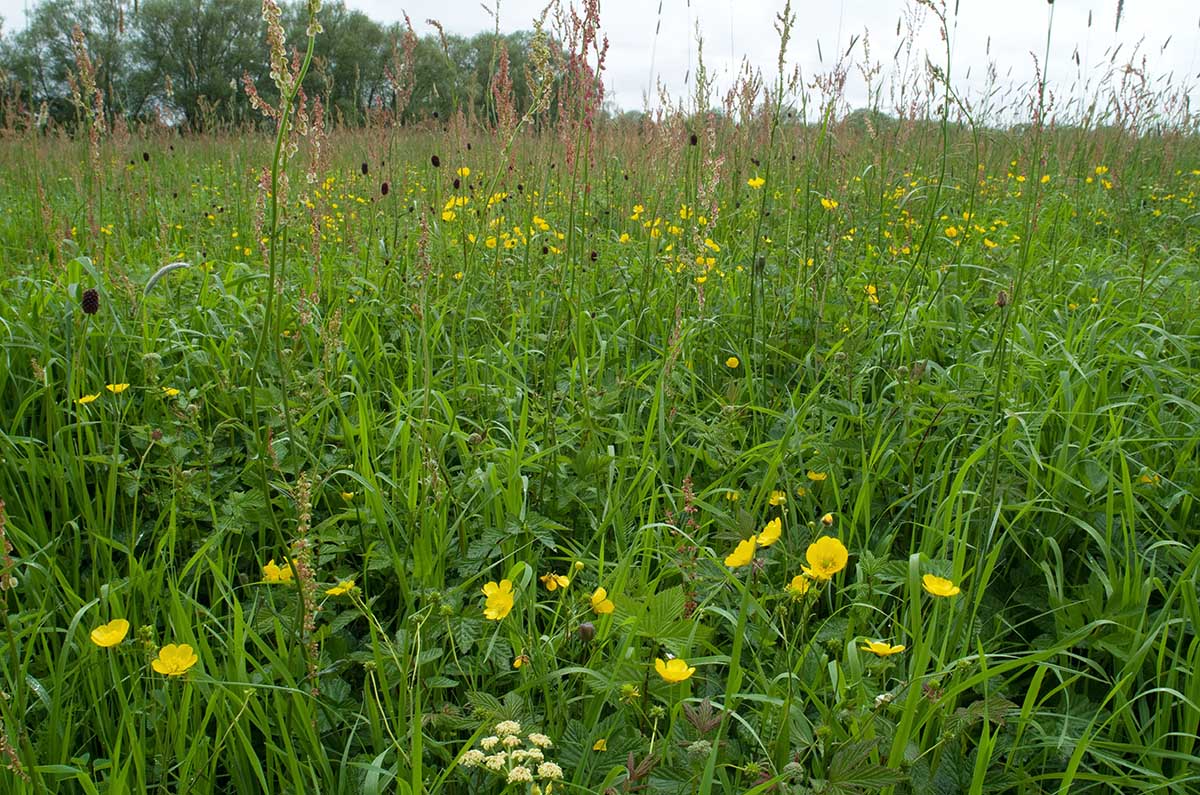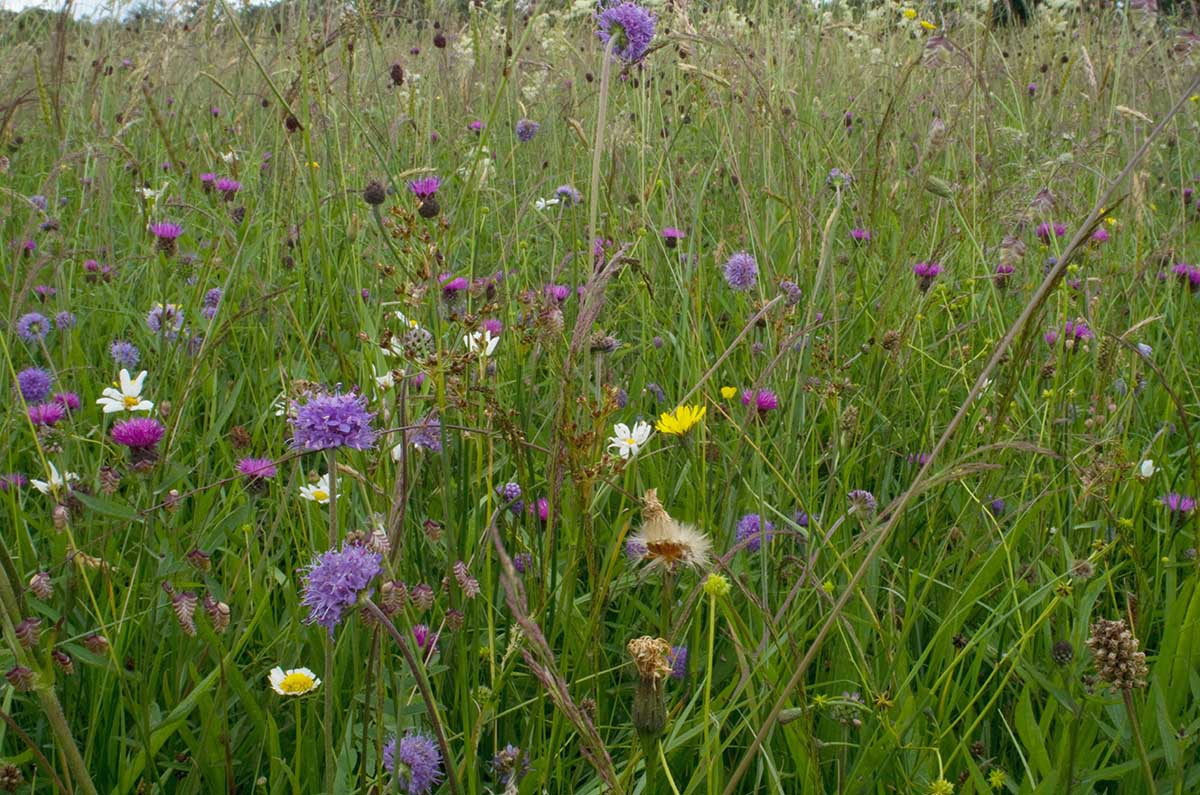The flowers and grasses found in meadows can tell you a lot about the site history, management, type and fertility of soil and levels of water on the site.
Species with similar soil moisture and fertility requirements tend to grow together and form recognisable plant communities. Those typical of species rich floodplain meadows are:
Burnet floodplain meadow
The most typical community of moist, but not waterlogged, soils on floodplains is Sanguisorba officinalis - Alopecurus pratensis (great burnet-meadow foxtail) grassland (MG4 of the National Vegetation Classification (NVC; Rodwell, 1992). Typical of well drained alluvial soil (see plant carousel below).
 Burnet floodplain meadow (MG4) © Hilary Wallace
Burnet floodplain meadow (MG4) © Hilary Wallace
Crested dog’s tail-marsh marigold grassland
Where the water table is kept higher in the summer (for example on groundwater fed systems) the Cynosurus cristatus - Caltha palustris ( (MG8 of the NVC) replaces the MG4. Typical of constantly moist soil (see plant carousel below).
Many sites will support a range of plant communities; as the topography and soil nutrient availability vary, so the plant communities will change. Our plant grid provides more information about different plant communities and their water and nutrient requirements.
The plant carousels below show some of the key species found in each plant community listed (MG4, MG5 and MG8).
 Crested dog’s tail-marsh marigold grassland (MG8) © Hilary Wallace
Crested dog’s tail-marsh marigold grassland (MG8) © Hilary Wallace